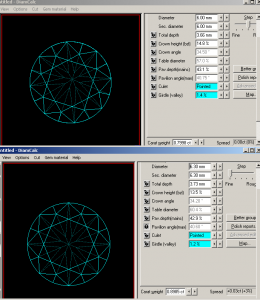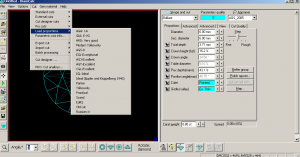re:The 1ct has more spread per ct which is a fact...
Exactly !
How is misleading what diamonds with exactly same proportions have Different "Spread"?
How is helpful such "spread"? "Spread" what mainly gives preference for bigger diamonds?
"Spread" what helps bigger diamonds to hide Real negative Spread( due deep pavilion, moon facets, etc)
will such "Spread" protect consumers? Help to do best choice?
for my opinion it is not useless only moreover it is very misleading and confusing . It is one reason why we do not use such "Spread" in OctoNus products
Exactly !
How is misleading what diamonds with exactly same proportions have Different "Spread"?
How is helpful such "spread"? "Spread" what mainly gives preference for bigger diamonds?
"Spread" what helps bigger diamonds to hide Real negative Spread( due deep pavilion, moon facets, etc)
will such "Spread" protect consumers? Help to do best choice?
for my opinion it is not useless only moreover it is very misleading and confusing . It is one reason why we do not use such "Spread" in OctoNus products










300x240.png)